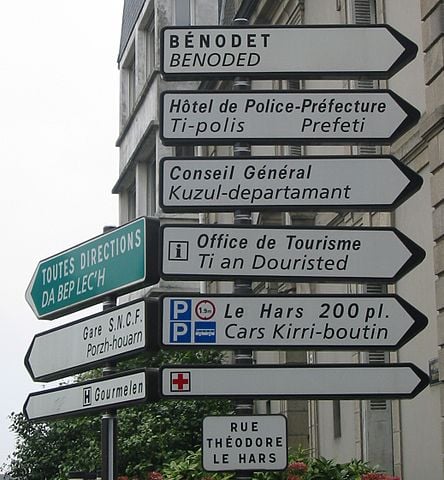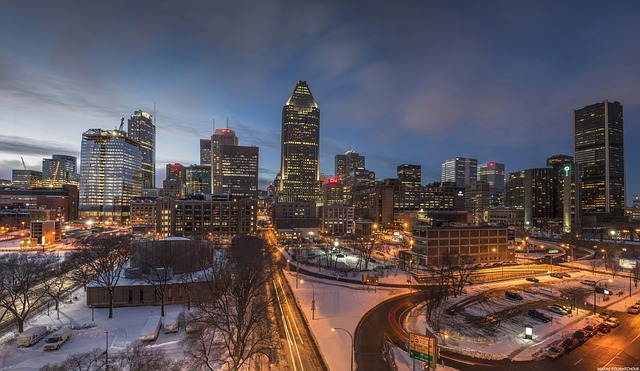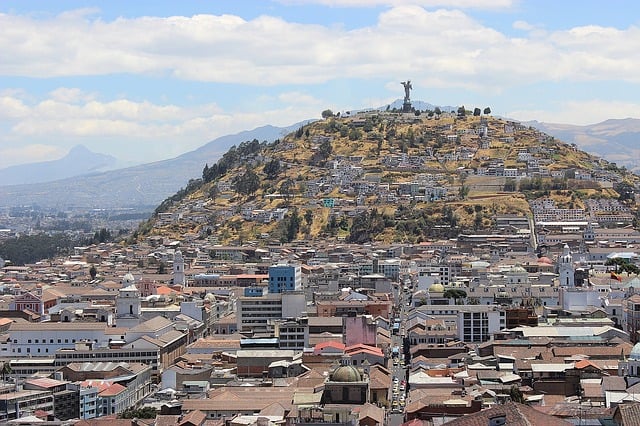Lost In Translation: Bilingual Cities
Imagine if you lived in a city where two languages are spoken. Are there twice as many signs or maybe just more pictures? What language do you speak in restaurants, the bank, or the post office? How do parents communicate with their kids and is it the same as how teachers speak to their students? While bilingualism improves people’s ability to multitask and looks great on a CV, arguably, an entire city filled with people who speak two different languages sounds inevitably confusing. However, throughout the world there are cities and societies that do just that. Let’s take a look at a few bilingual cities and see how their inhabitants manage the dualism.

Image via Wikipedia
Dublin, Ireland
Snuggled in the middle of the East coast of Ireland, Dublin bustles with native speakers of English and Gaelic. Gaelic, as it is commonly known, is also the same as Irish: an indigenous language from the 12th century that developed from Middle Irish with some Celtic origins. Irish is spoken in designated areas throughout Ireland with a higher concentration found along the West coast, called the Gaeltacht, which were districts cultivated in the late 19th century during the Gaelic Revival. Currently Gaelic is the first official language of the Republic of Ireland and recognized by the European Union. Research published in 2015 showed that of the 155 electoral divisions in the Gaeltacht, only 21 are communities where Irish is spoken on a daily basis by 67% or more of the population. In Dublin, street signs are both in English and Gaelic, but if you make eye contact on the street in Dublin, you should greet by saying “hello” or nod your head in a passer-byers direction instead of uttering “dia dhuit.” Recently there has been an increase in Gaelic speakers in Dublin but a decrease in the Gaeltacht; all together only 10% or 1 million of the population in Ireland speaks, writes, and understands Gaelic fluently.

Photo via Pixabay
Montreal, Canada
Montreal is hailed as The French-speaking and second largest city in Canada. French is the sole official provincial language spoken by 56.9% of the 4.1 million people that live in Montreal recorded in 2014. 18.6% of the Montreal population speaks English with 19.8% speaking other languages. the 2006 census reported that in the Greater Montreal Area, 66.5% spoke French as a first language, followed by English at 13.2%, while 0.8% spoke both as a first language. After Paris, Montreal is the second largest French speaking city in the world and is a hub for French language television, radio, and theater.
The cultural divide between Francophone and Anglophone speaking Montreal is deeply historic and literally divides the city in two. Saint Laurent Boulevard runs from North to South and divides the city from East to West; West is Anglophone Montreal and East is Francophone Montreal with the middle section mixed with immigrant communities. When you enter a shop in Montreal, make sure to greet by saying either, “bonjour” or “hi” depending on with which language you identify more.
Barcelona, Spain
Barcelona is home to the two official languages of Spanish and Catalan, with the former being the dominant language. Bilingualism in Barcelona grew due to the massive immigration of Spaniards from other provinces during the industrialization of Cataluña in the early 20th century. Around 52% of 1.6 million people in Barcelona speak Catalan to their children whereas 48% say they address strangers in Catalan over Spanish, and only 9% use Catalan and Spanish equally. The common way men and women greet in Barcelona is with two besos on either cheek and saying “Hola, bon dia” (Hello, good day).
Quito, Ecuador

Image via Pixabay
Now to our last city: Quito. In the 1500s, Ecuador was once a part of the Spanish Viceroyalty of Peru until later gaining independence in the mid-nineteenth century. Sitting over 9,000 feet above sea level in a valley between volcanoes, Ecuador’s capital, Quito is quite the case study. Ecuador’s official language is Spanish but Kichwa (a variant of Quechua that runs through Colombia and Ecuador) is a close second. There are up to 22 indigenous languages spoken in Quito and 9 of them are variations of Quechua.
Quito is a unique “bilingual” city because of the indigenous peoples’ displacement that left a trail of linguistic prominence on grammar, syntax, and vocabulary. By no means will you ever hear “Imanallya” instead of “buenos días” because it can be argued as a subservient language, but you will hear things such as “a-rra-rrai” (hot), “ai-chai-chai” (cold), “chumado” (drunk), or even future imperative verb tenses: “cuidaráste” instead of “cúidate” (take care). This is completely an outlier to the other aforementioned “bilingual” cities but there is a linguistic layer that screams for attention when walking through the city that you can’t ignore.
From Macau to Jerusalem, the world’s bilingual cities aren’t limited to this short list of places to test the wandering linguistic ear. Give it some research and do some exploring. Add some cities to your worlderlust travel list where you practice both languages and see where life can take you.
